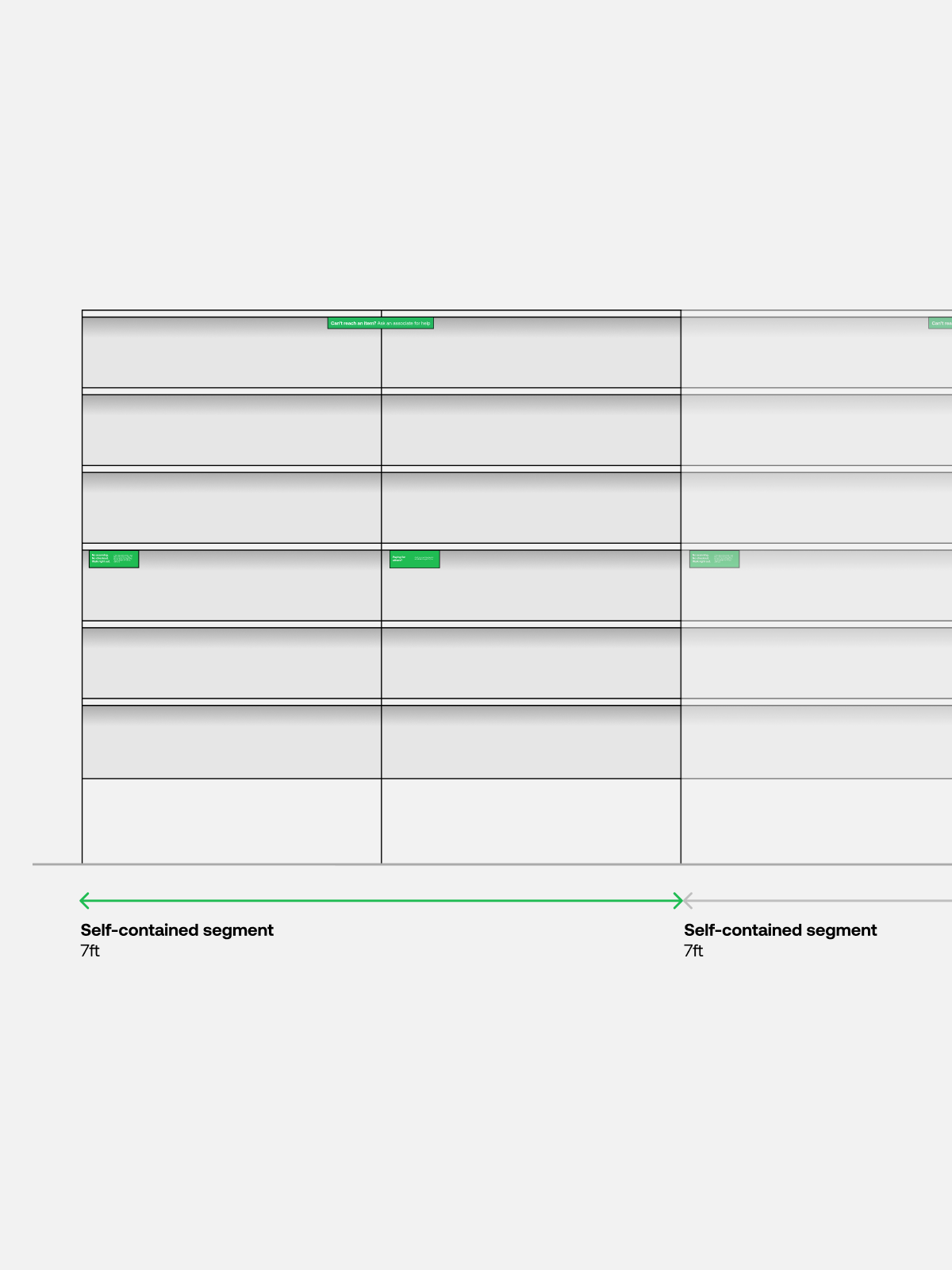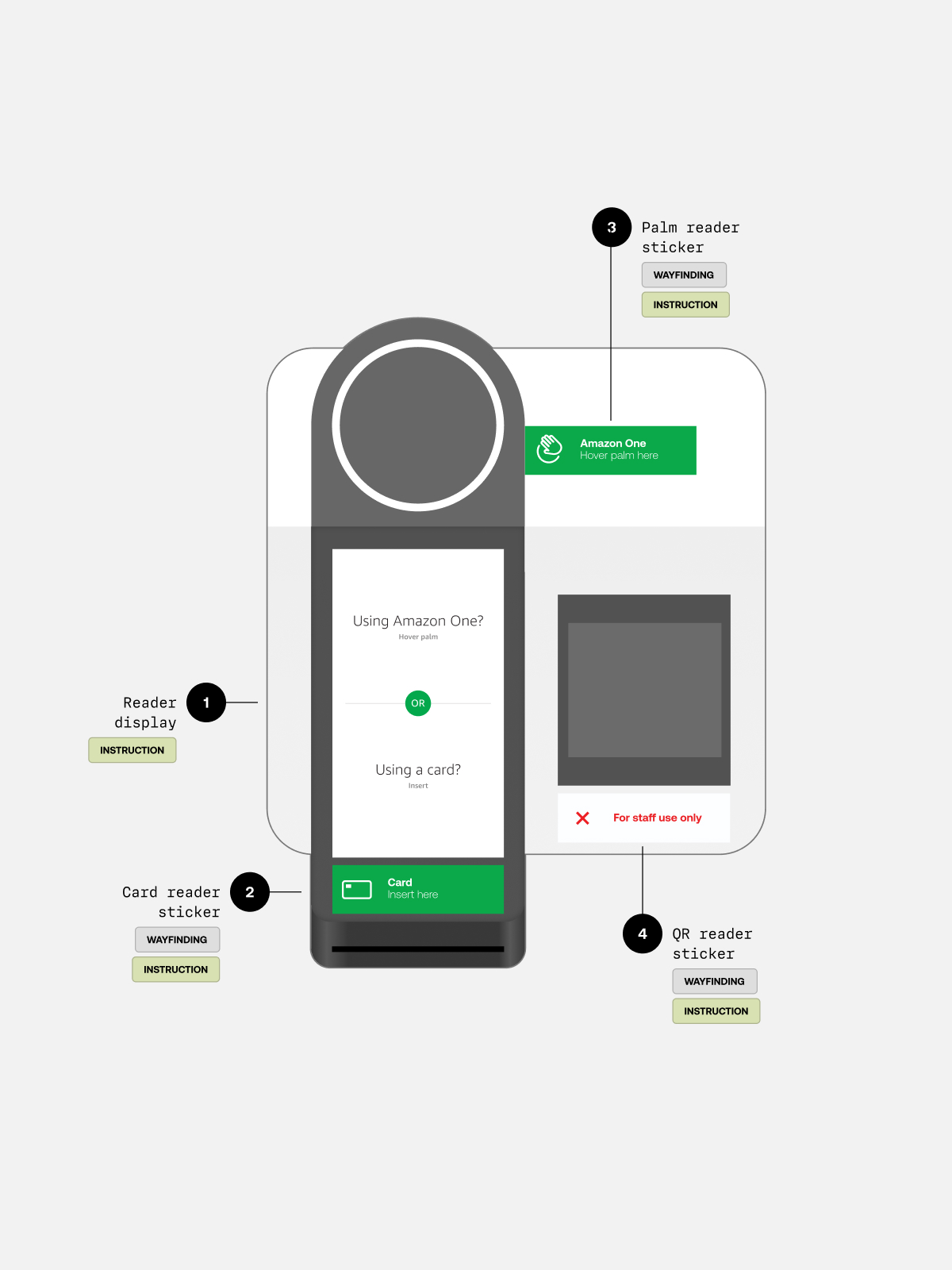
Loading all those gorgeous pixels

Loading all those gorgeous pixels

Interception mechanism
Provides shoppers with relevant information before or during their interaction with the store. It relies on shoppers noticing and engaging with signage without an explicit need.
Correction mechanism
Provides shoppers with relevant information when they experience a barrier or an error due to the inconsistency between their mental model and how JWO actually works. It relies on shoppers actively looking for information to help them resolve an issue.

Guidance system taxonomy
The guidance system was broken down into five distinct categories classified by function. By differentiating understanding from immediate directions, acknowledgment from emotional support, this approach helped to align messaging, tone, hierarchy, appearance, and placement of signage.

Messaging formula
The unfamiliarity, uncertainty, and initial lack of confidence in JWO increase the shopper’s need for both instructions and understanding of how the technology works. This meant that the guidance system had to not only explain what actions are expected of shoppers and how to perform them, but also why they are necessary, and how they work.


Self-containment
In-storeIf the shopper is buying just one item, guidance information needs to be available to them regardless of which shelf they pick the item from.

Self-contained segments
To reinforce new behaviors and boost confidence, critical messaging needs to be repeated frequently, while guarding against overuse that might cause shoppers to tune out.



Researchers escorted participants through the full shopping experience. Each shopper provided feedback through a combination of task-based walkthroughs, and open questions.

Shoppers were also asked to choose which design elements enhanced their understanding of how to use JWO, and which increased their confidence to use it.

Entry experience
Around and at entry points is the first exposure most shoppers have to a JWO store and it is paramount that signage engages them, educates them, and explains the experience so that they are excited and confident to enter.

Storefront wall & display
As the first and most prominent touchpoint seen by the shopper, it carrier information that fulfills a number of critical functions to raise awareness and confidence—from branding and marketing, to directions on how to use the store, to important regulatory and legal details.

Entry gate exterior
While the storefront wall is prominent, it may be obscured or missed in busy environments. This makes it critical that the entry gate provides the shopper with immediate instructions and some understanding of how a JWO store works.

Authentication terminal
Given the multitude of authentication methods offered to the shopper, the device uses universally-recognized icons and clear prompts to enable the shopper to quickly identify the reader matching their payment method and interact with it.

Shelf-talkers
Used for messages that reinforce the shopper’s understanding of the value proposition and how JWO works, underscore availability of associate support, and remind them of specific rules and requirements.

Exit experience
Being one of the biggest bottlenecks due to the absence of familiar barriers (such as cashier), the exit is designed to work in tandem with other touchpoints throughout the store to normalise the novel experience.

Receipt kiosk
Comprised of two touchpoints—a poster and takeaway card—to accommodate the shopper with more time to input their details, and the shopper rushing to leave the store.

Exit pedestal pop-up
Conveys critical information prior to departure. Even if the pop-up is in close proximity to the receipt kiosk, keeping the takeaway cards at the exit can help to reduce congestion.

